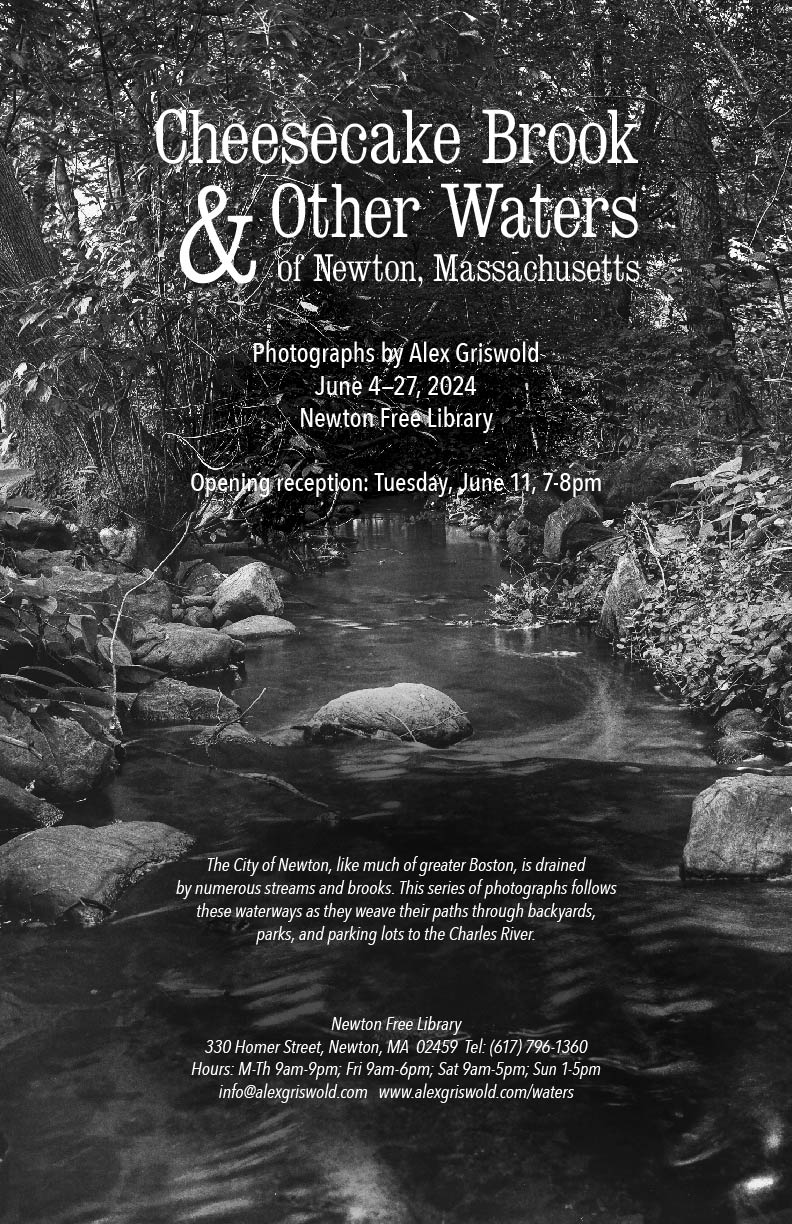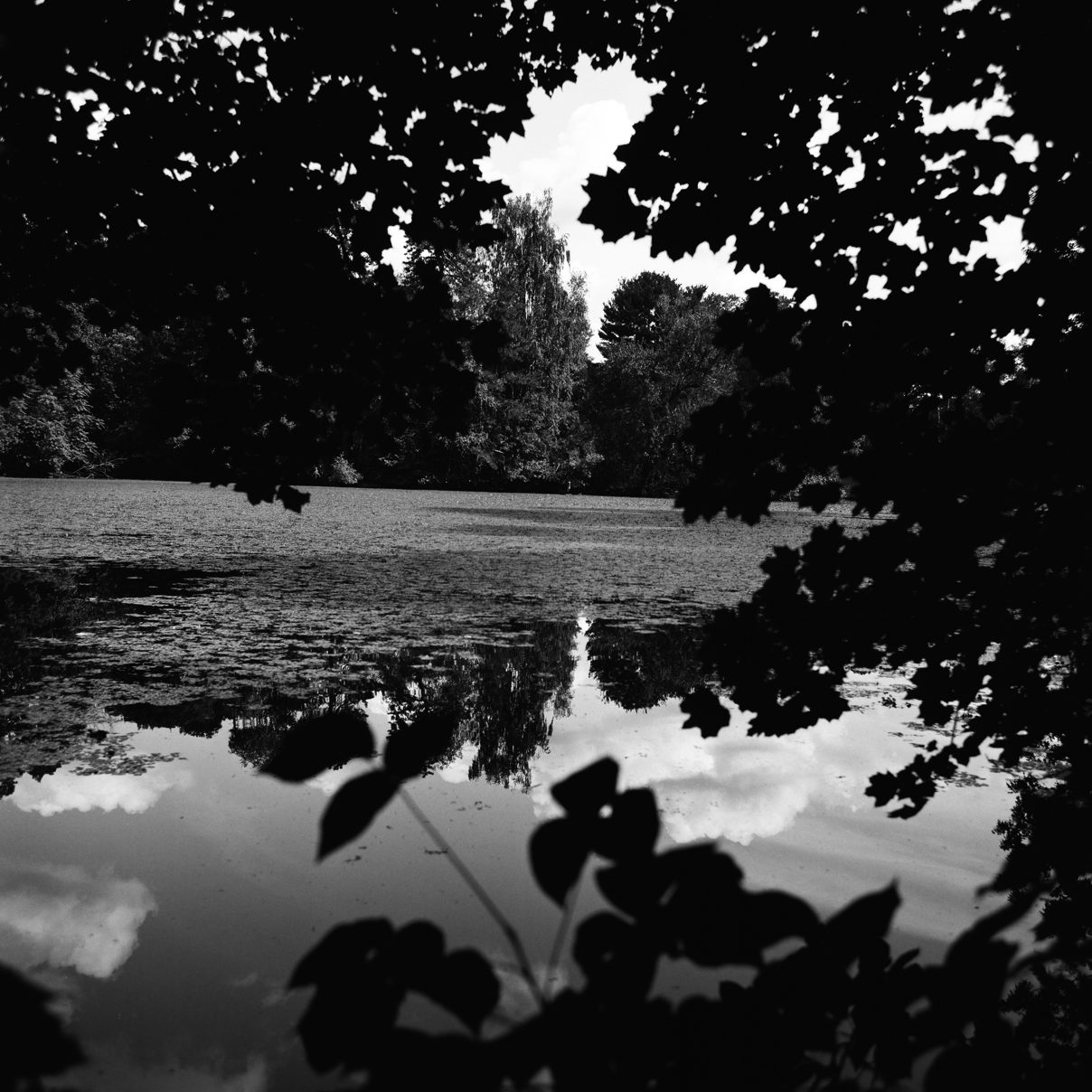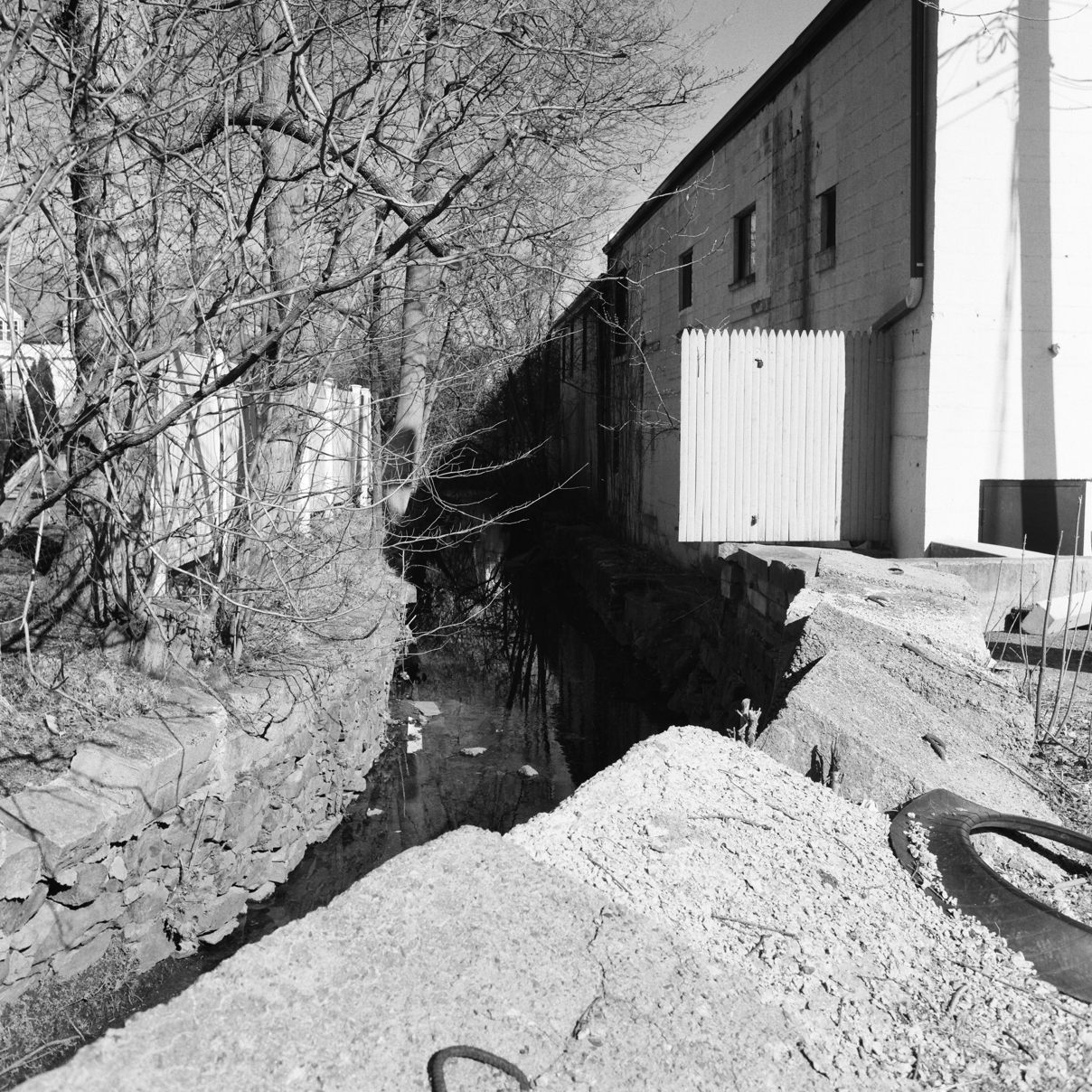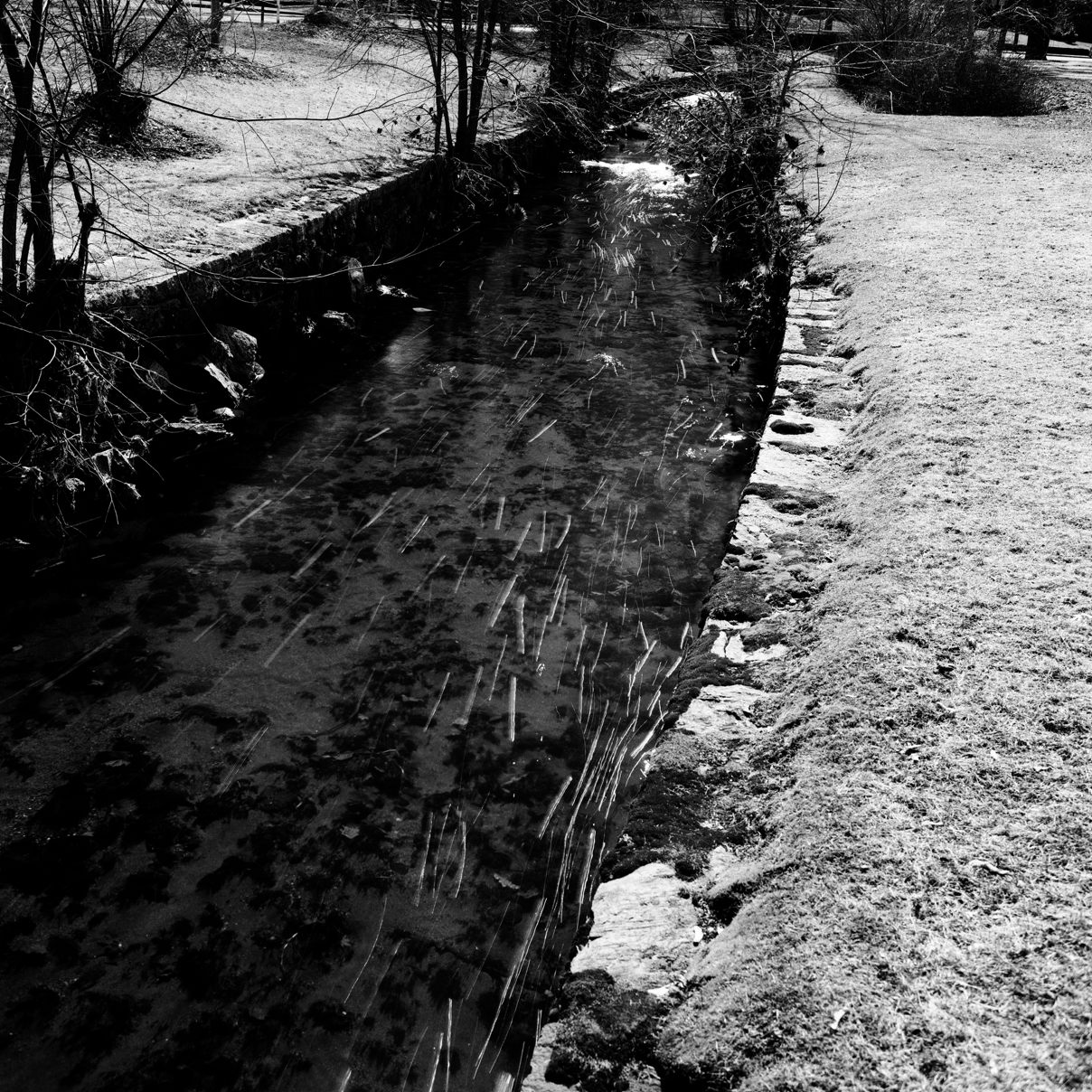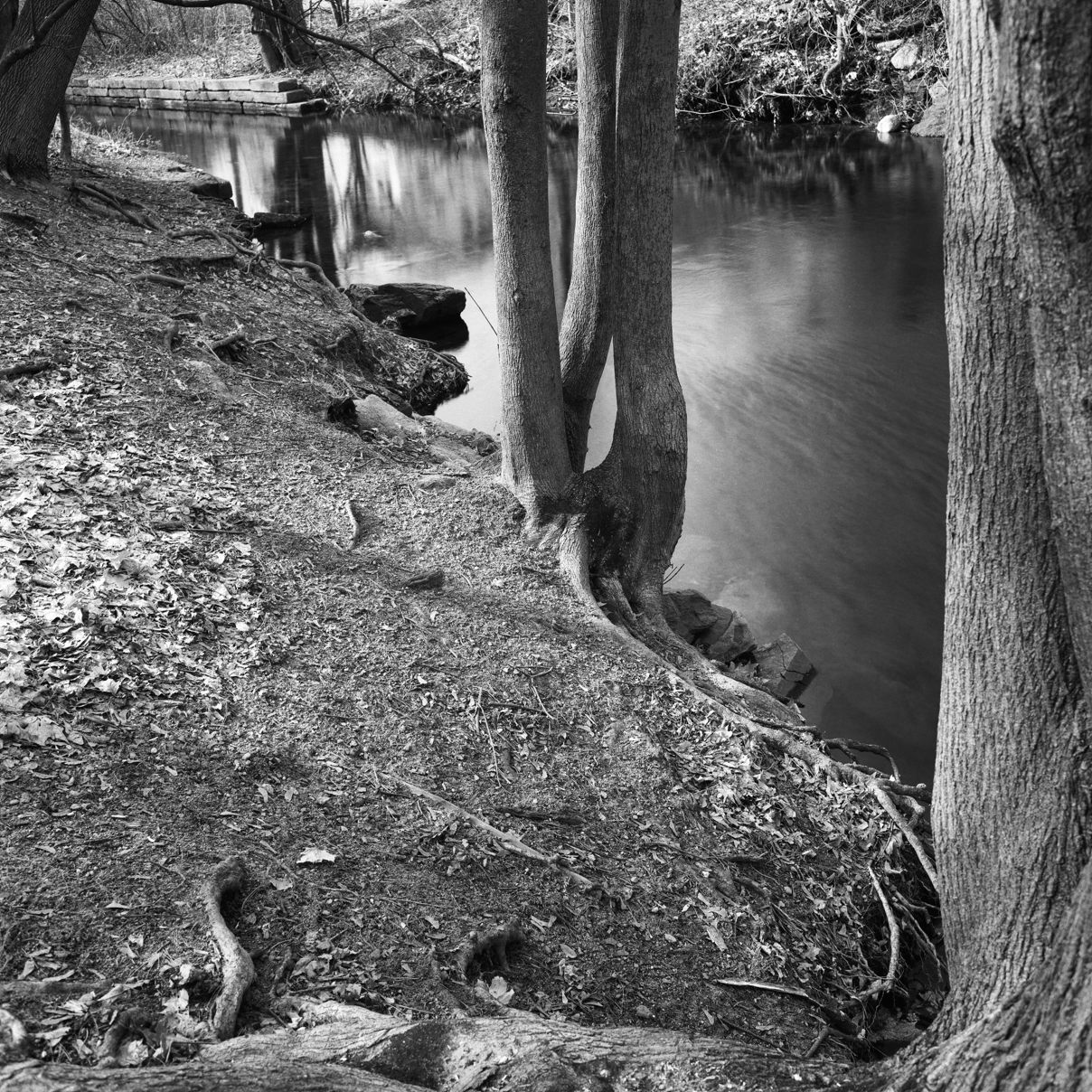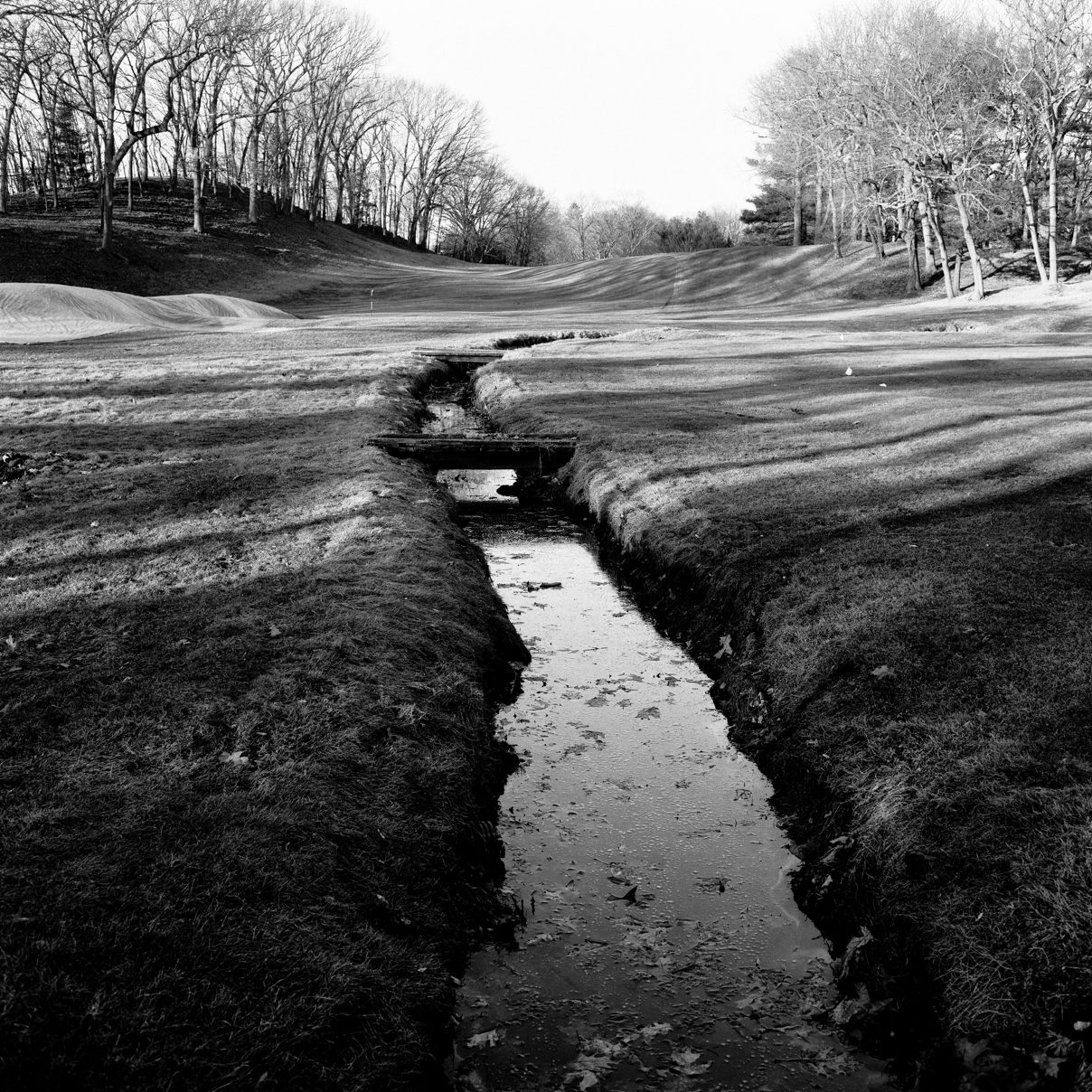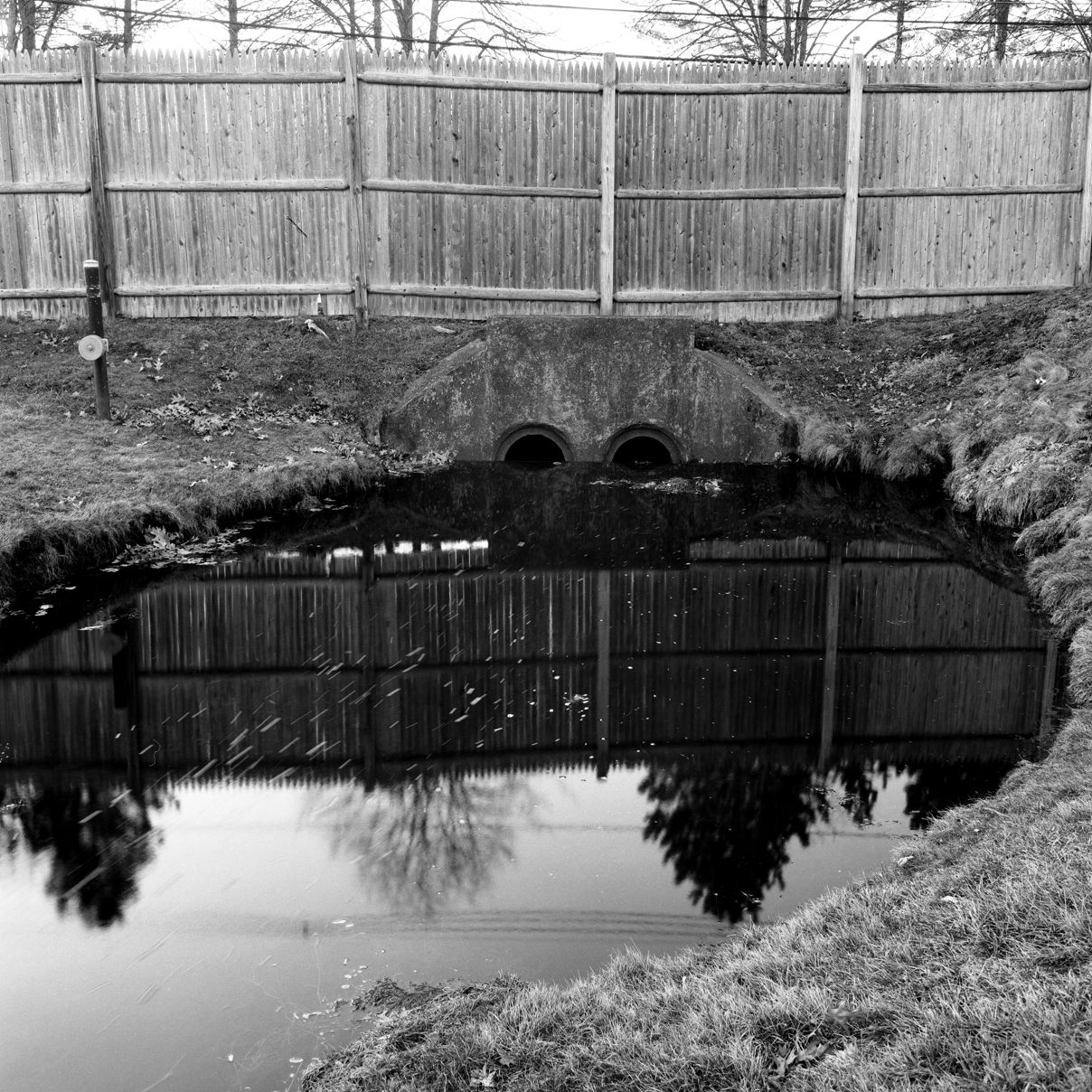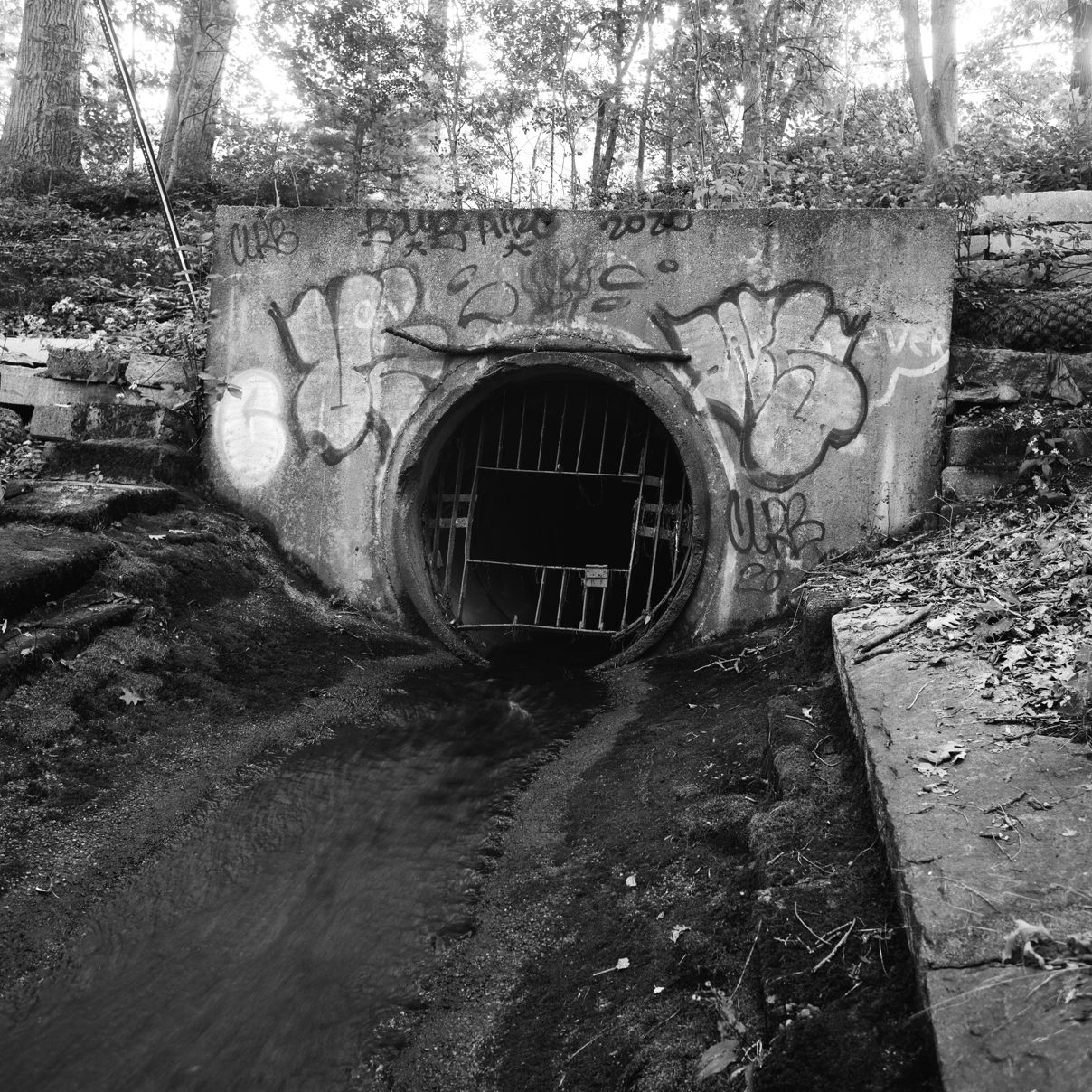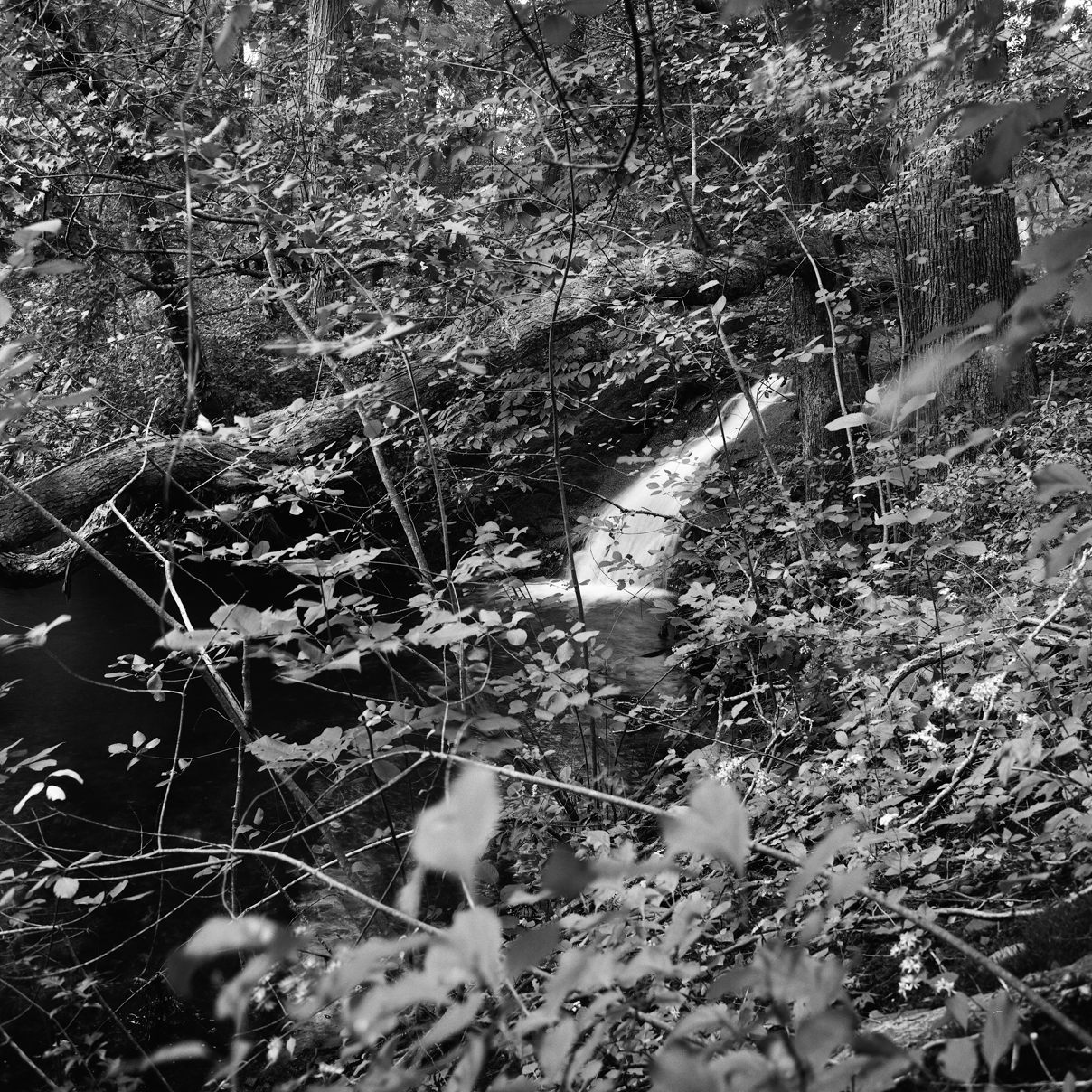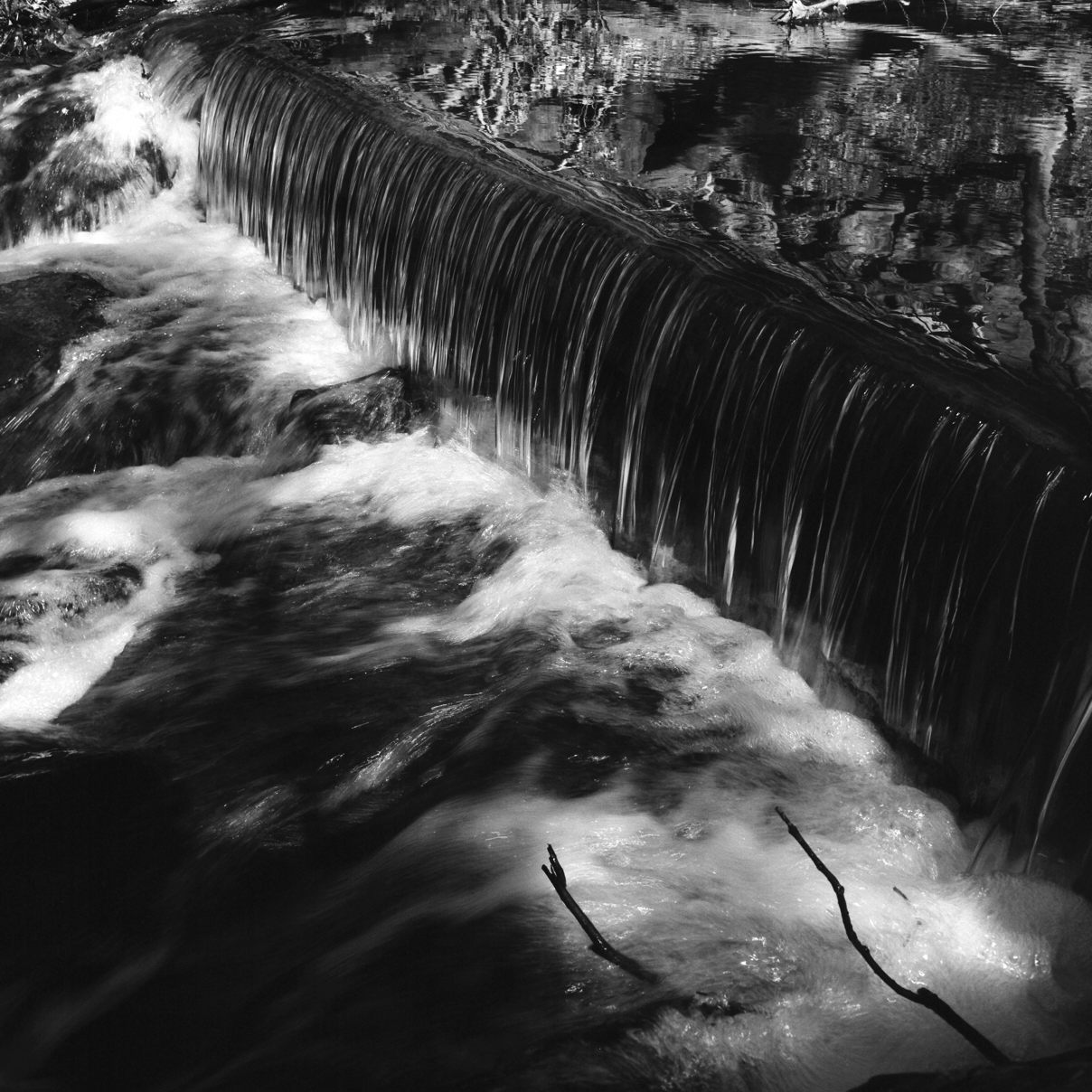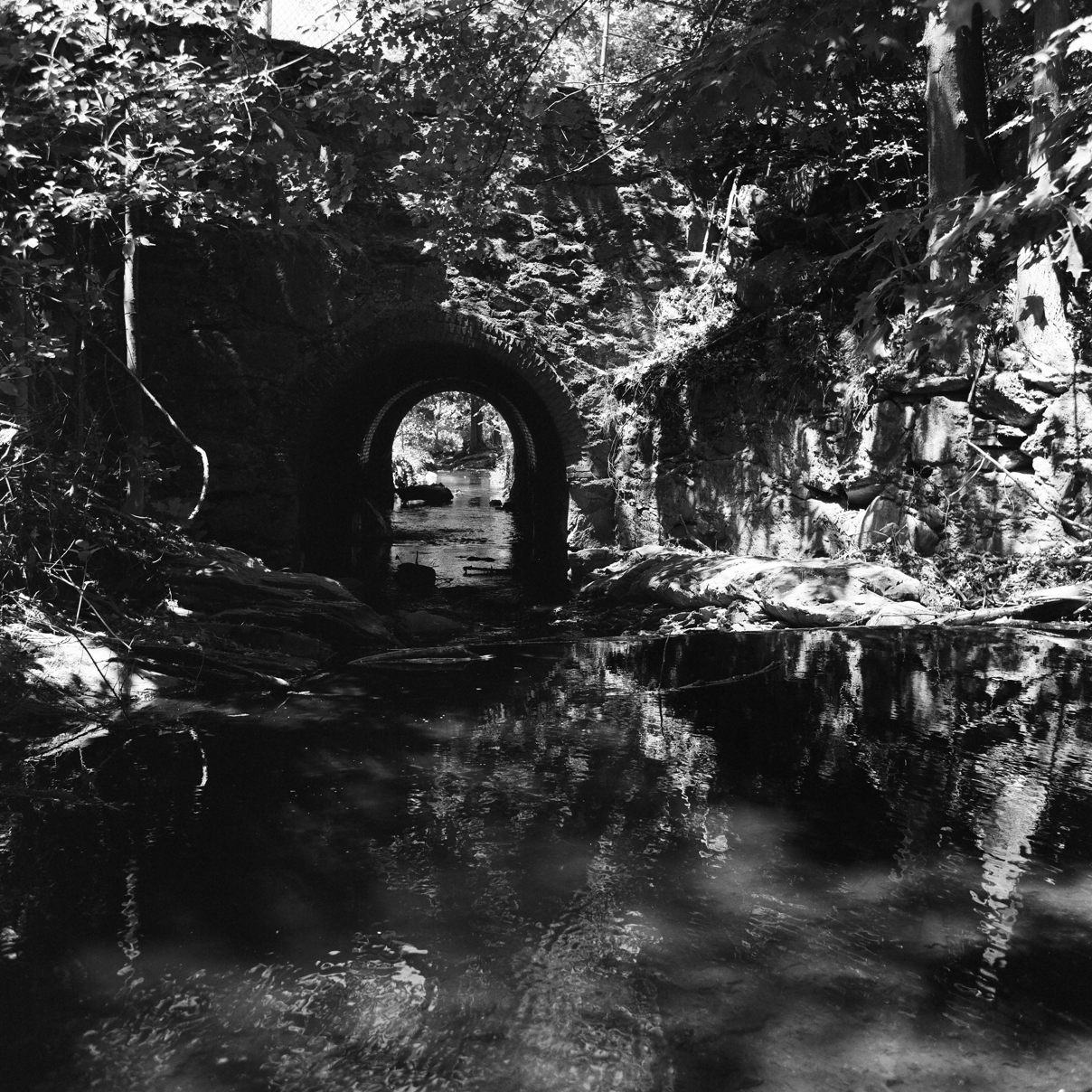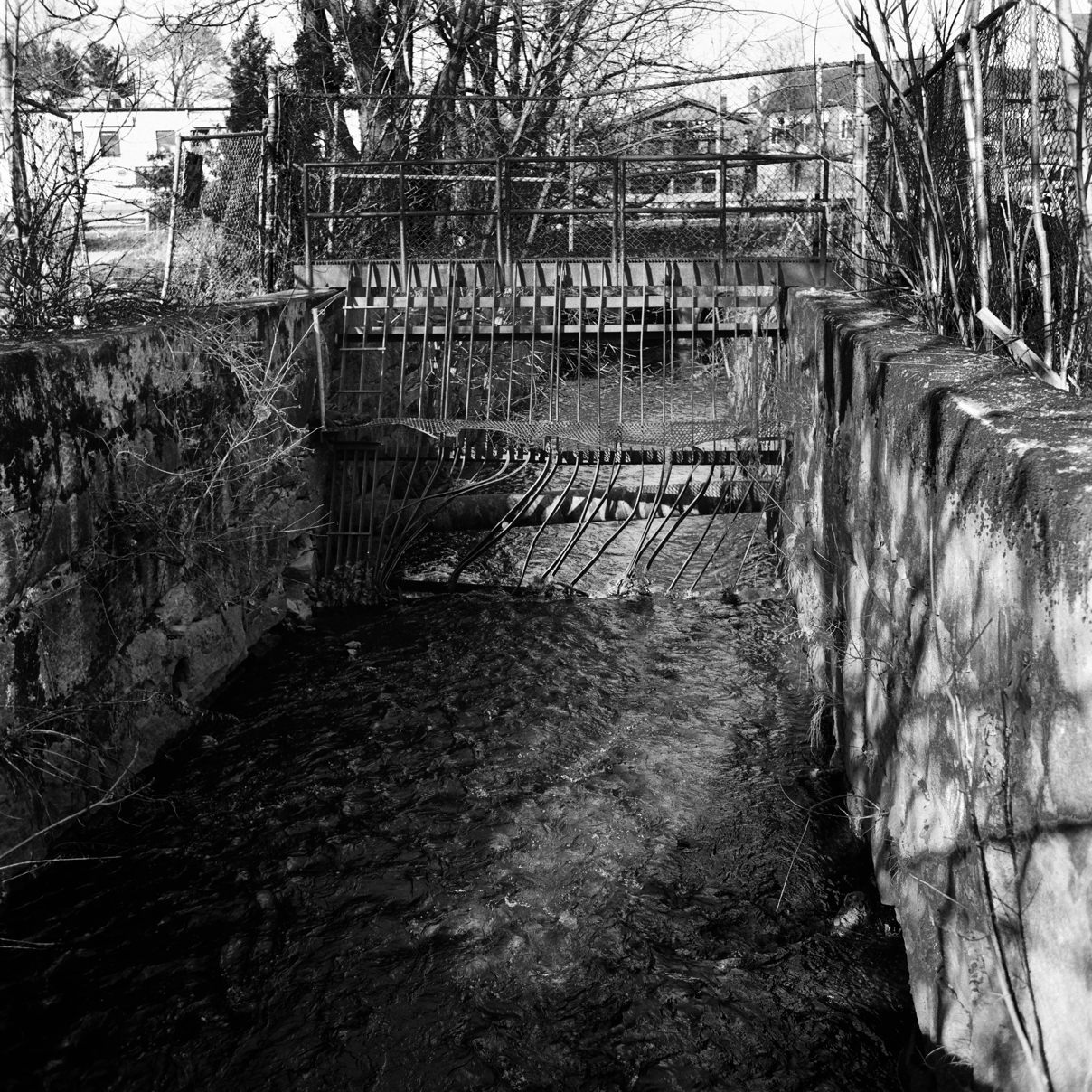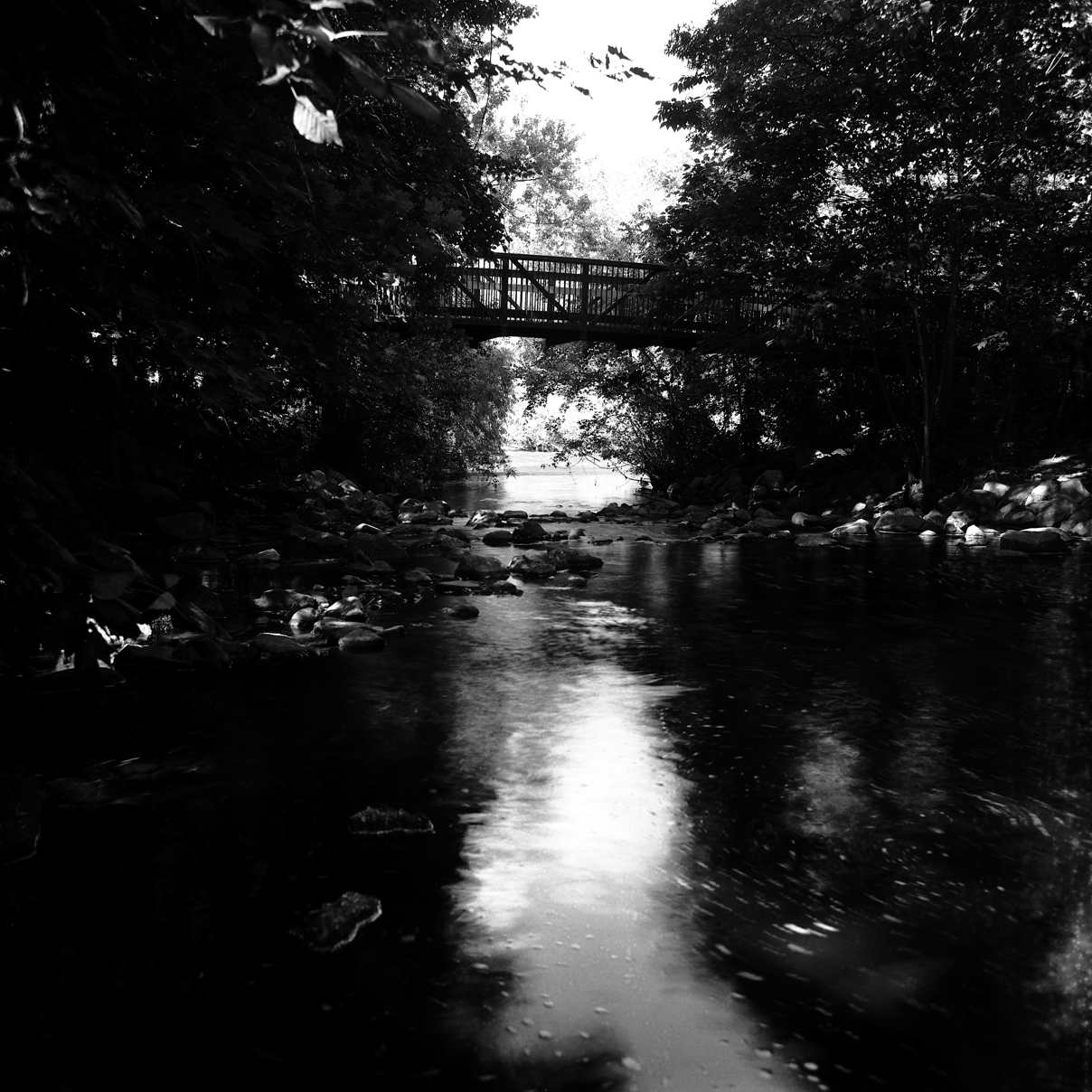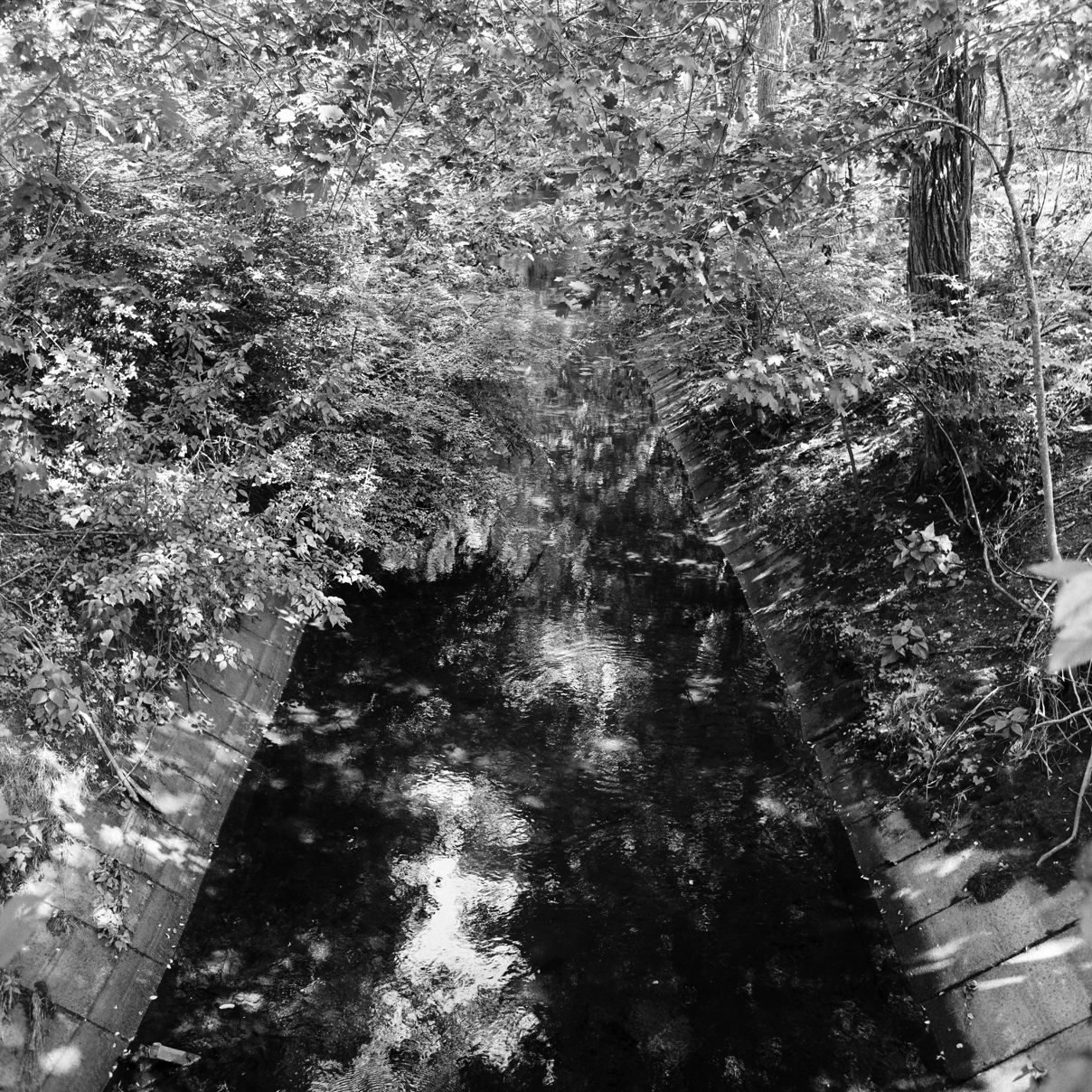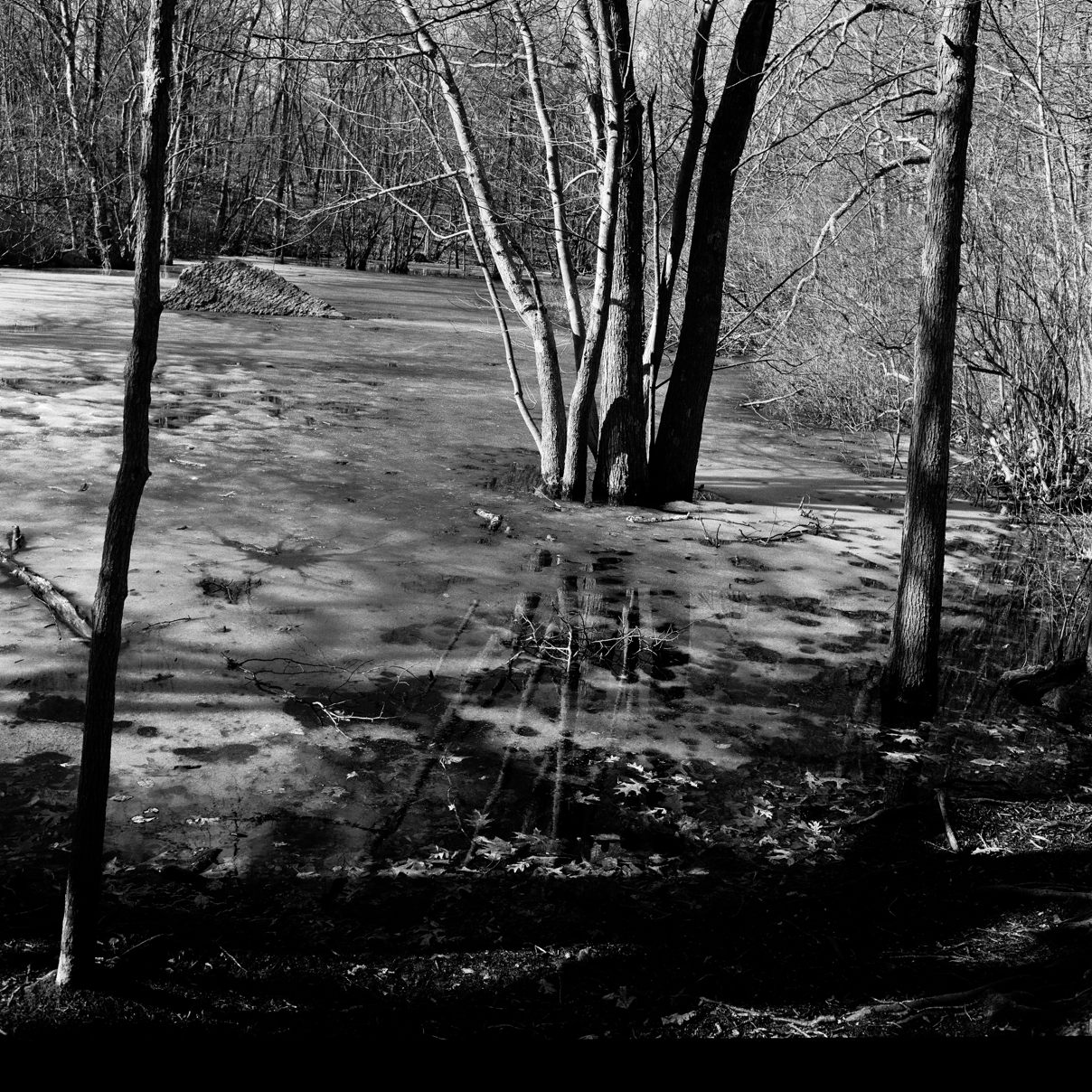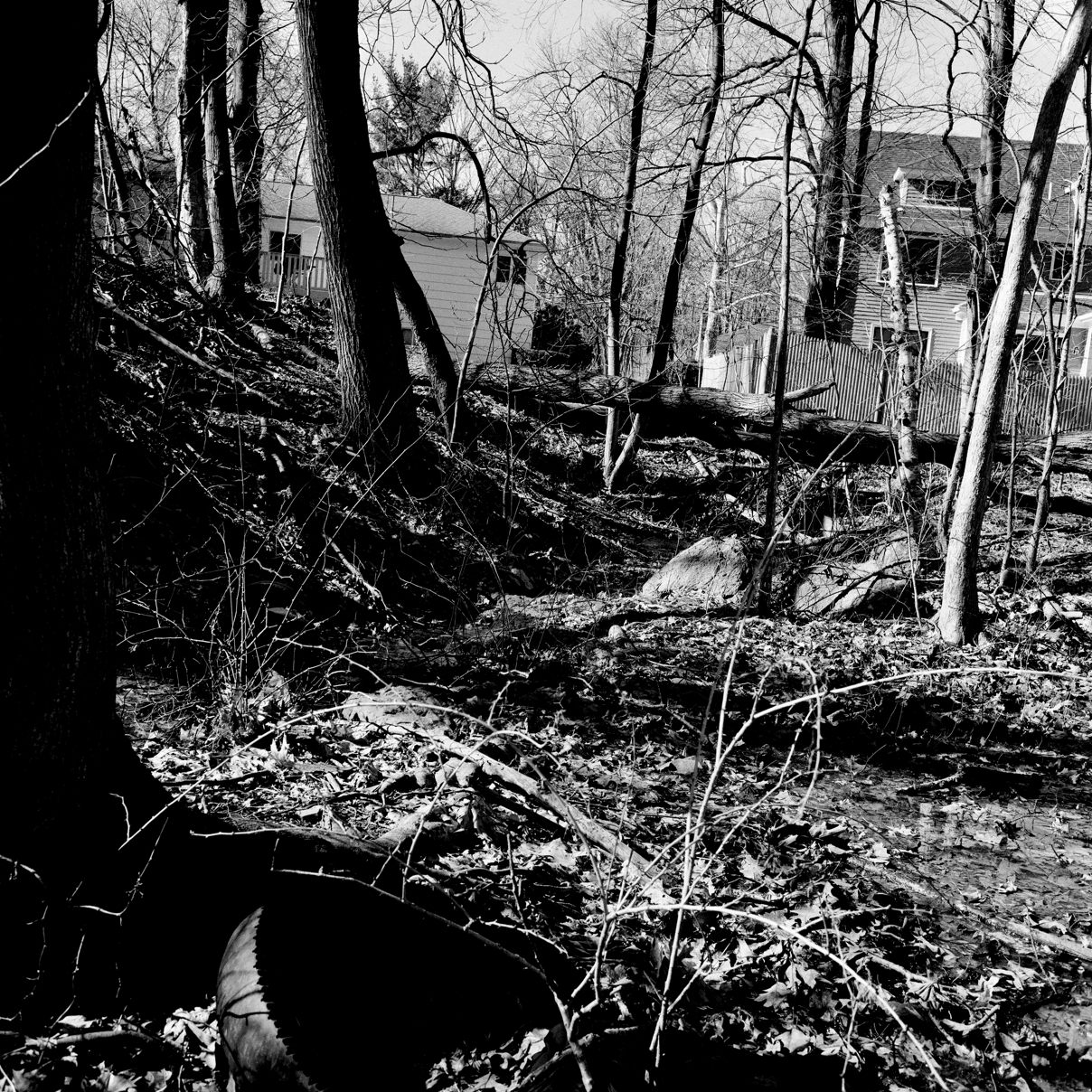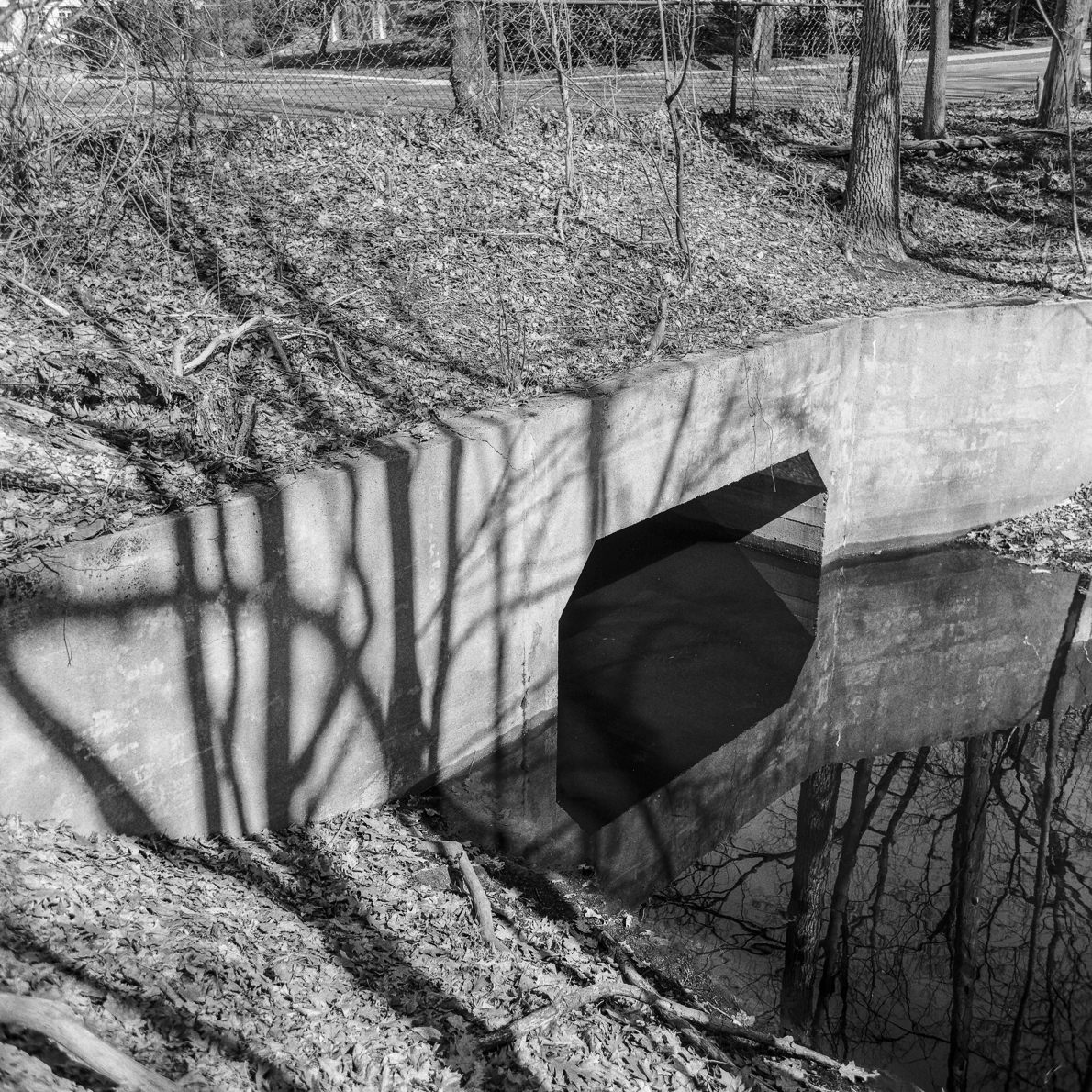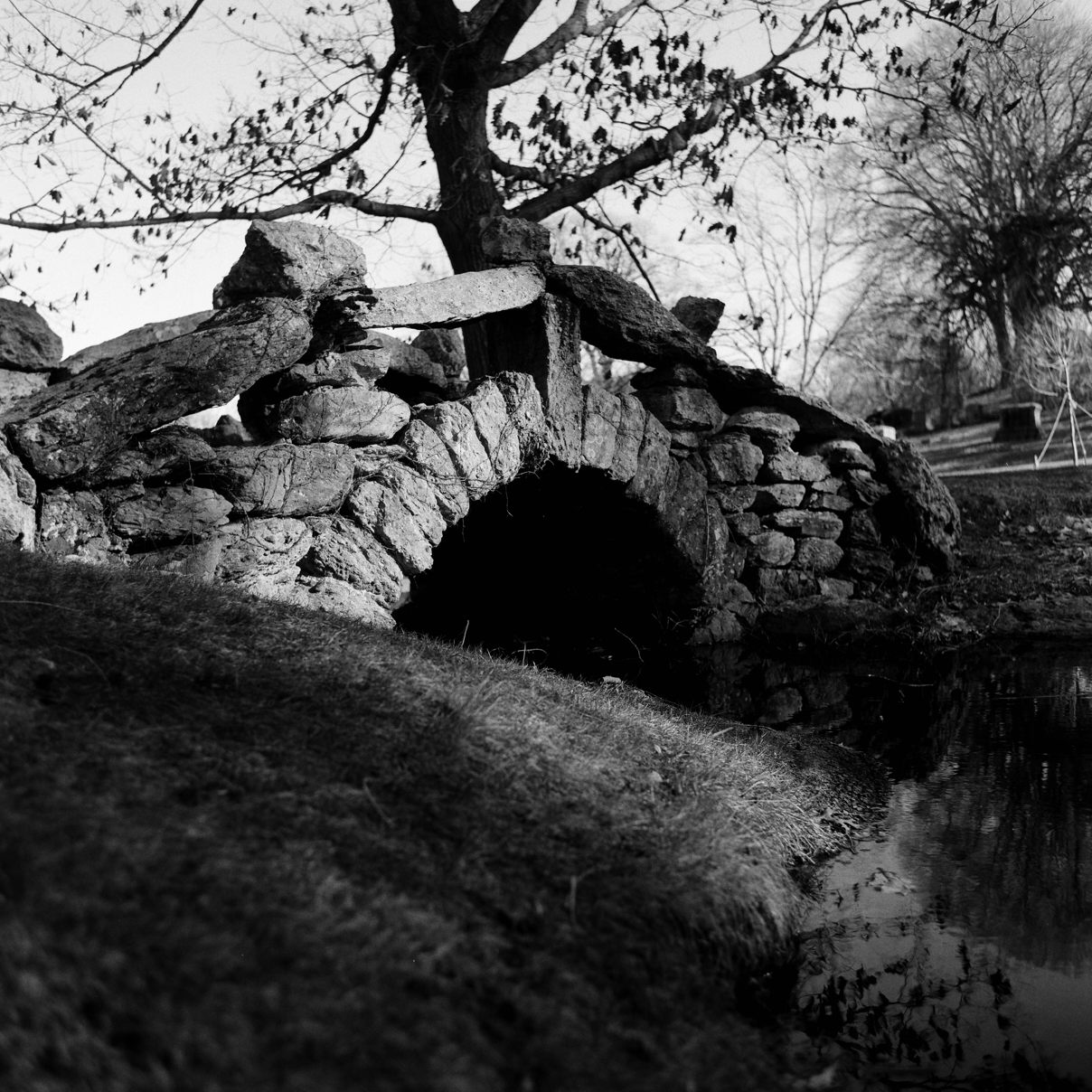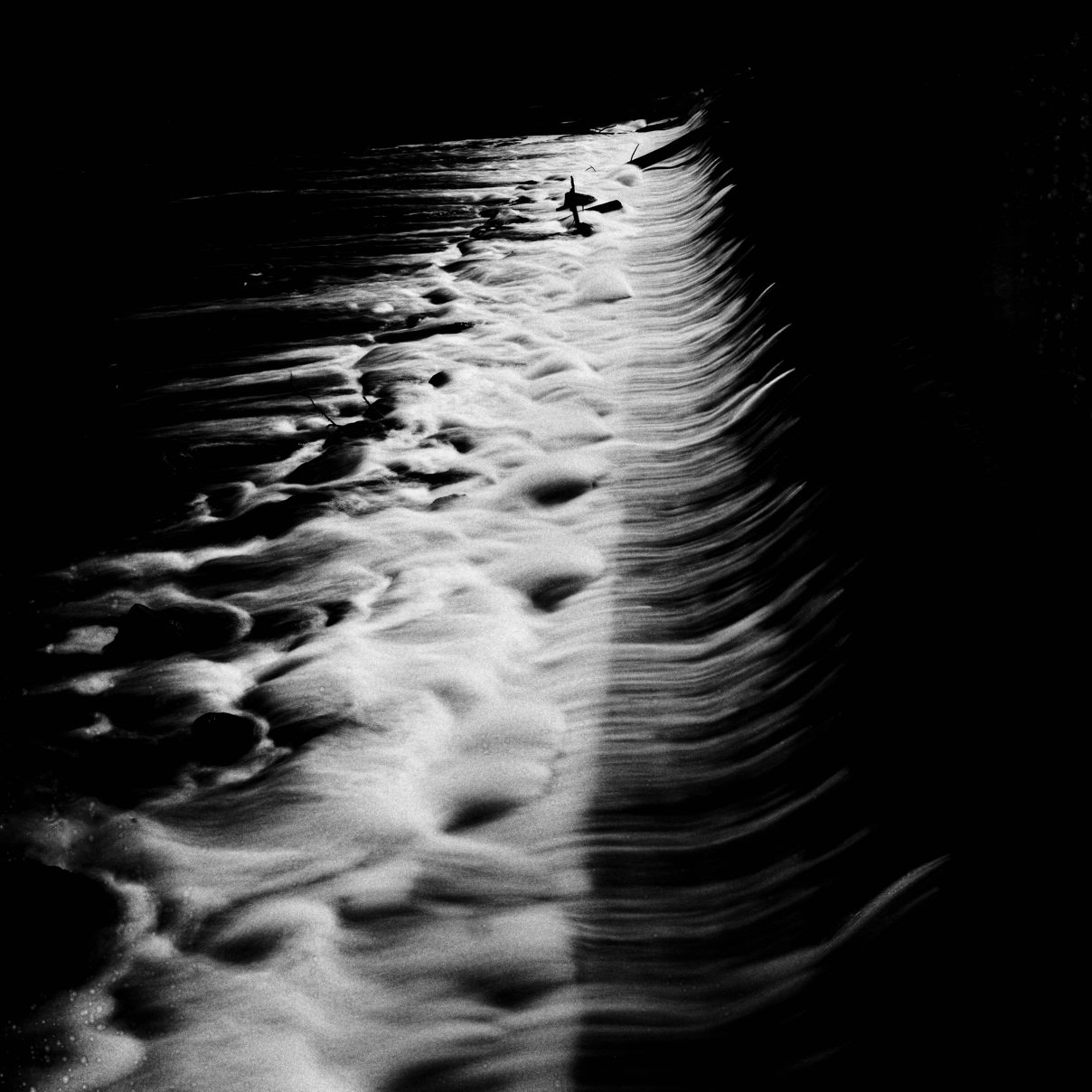A series of black-and-white photographs that trace a few of the brooks and streams in Newton from their sources to the Charles River. Please visit the current exhibition at Newton Free Library June 4 - 27, 2024.
A paperback book is available with 78 photographs from this collection. The book also includes maps and a transcript of an interview about stormwater management with Newton's City Engineer, Lou Taverna, and Environmental Engineer, Eric Highers.
Newton, Massachusetts, a city of 89,000 covering 18 square miles, is drained by several watersheds, several of which are represented in this collection. In the west, Cheesecake Brook begins at Brae Burn Country Club and curves through West Newton, before entering the Charles River at Albermarle Road. In the south, South Meadow Brook drains Oak Hill, reaching the Charles in Newton Upper Falls. The center of the city is crossed by a series of brooks and streams, beginning with Hammond Brook in the east, which travels through Newton Center before merging with Cold Spring Brook at City Hall, leaving the dam at Bullough’s Pond as Laundry Brook. Runaway Brook begins at Woodland Golf Club and spends most of its journey to the Charles in culverts under the Riverside MBTA station.
In a great transformation, Newton became a city near end of the 19th century. As our community evolved from a primarily agrarian collection of villages to a modern commuter suburb, residents viewed Newton’s streams as impediments to development, "Areas Requiring Drainage," or worse, as depositories of trash and building debris. Cheesecake, Laundry, Runaway, and the other brooks and streams were confined, redirected, channeled, and forced underground for large portions of their journeys.
Yet they persist. They must persist, because the rain still falls, and the lands that they serve cannot absorb all the water, so the water flows, inexorably, to the Charles River and then to the sea.
Today, Newton is undergoing another dramatic transformation. Economic forces pushing for ever larger and more impressive residences, in counterpoint with a moral imperative to provide additional housing for residents to live and work in a more sustainable way, is changing the fabric of the city. Looking toward the future, the streams will still be here. In almost every corner of Newton, they are never far from view, though sometimes we can only find them as underground traces on maps.
The intent behind this collection of photographs is to document, with minimal image manipulation, the waters of Newton as broad examples of a changing landscape. In this respect, the streams in Newton stand in for the brooks and streams in almost any suburban community in New England and beyond. In the photographer’s travels through Newton, the images collected here were often available in plain view from a bridge or bank. Other times, I had to jump fences, ask neighbors for permission to enter back yards, and scramble through vines and brush.
My intention in “daylighting” these streams (to borrow a term from the hydrologist), is to complete the circle: from the original Massachusett inhabitants, through Newton’s agrarian past, to today’s choices about our city’s future. Photographic details capture forensic evidence of these changes, both in the handiwork of those who have channeled, sequestered, dammed, or culverted the brooks and streams, and in those places where the streams still run, unimpeded, to the Charles.
Borrowing freely from landscape traditions, in both photography and painting, helped me see the links between these streams and a larger social and emotional history.
Although photographs make a poor substitute for time spent walking along, or sitting beside these waters, the abstraction of light and textures inherent in analog, black and white photography was a deliberate choice. Ultimately, these portraits of brooks and streams underscore the immanence of water as the driver of places and landscapes that refresh the human spirit.
This spiritual and aesthetic renewal is just as much an essential “ecological service” as the other functions these streams provide our city: drainage, replenishing groundwater, recycling nutrients, and habitat preservation. The photographic medium can also shed unflinching light, serving as a warning that, if ignored, today’s peaceful waters always carry the potential to rise and be destructive.
Let me be clear. The photographer does not presume to speak for the waters, but instead, to free their voices to be heard by each of us in their own way. The message they send is a small part of a larger chorus, one that is urging us to reaffirm our commitment to provide better stewardship for the landscapes and ecosystems from which we are inseparable.
